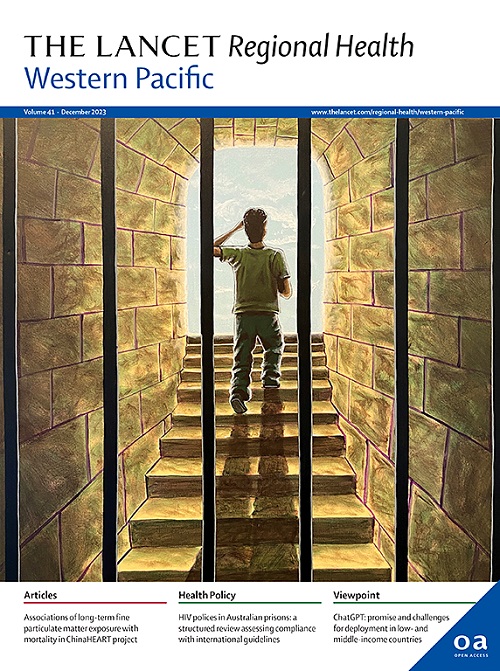The impact of integrated genomic surveillance on non-typhoidal Salmonella infection in Australia: an ecological study
IF 7.6
1区 医学
Q1 HEALTH CARE SCIENCES & SERVICES
引用次数: 0
Abstract
Background
Whole Genome Sequencing (WGS) is a powerful technology for monitoring and detecting outbreaks of infectious pathogens, including non-typhoidal Salmonella (NTS). Despite its higher cost than traditional typing methods, WGS offers numerous advantages, including higher resolution and potentially quicker turnaround time. However, evidence regarding its effectiveness in NTS surveillance has predominantly stemmed from micro-simulations or small-scale data. Notably, a recent systematic review identified a lack of real-world, large-scale evidence on the impact of WGS application in NTS surveillance. Our study fills this gap by estimating the effects of WGS on NTS surveillance in Australia using national notifiable disease datasets.
Methods
The main dataset was the National Notifiable Diseases Surveillance System (NNDSS) for NTS from 2009 to 2024. The treatment variable was defined as a binary variable representing the period when WGS was implemented in each jurisdiction of Australia. To minimise the effects of unobserved confounders, we employed a two-stage difference-in-difference (2sDiD) approach. This method estimated the parameters of state and period fixed-effects and then adjusted the observed outcomes from those fixed-effects in the first stage. The average treatment effect was obtained in the second stage by regressing the adjusted outcome against the treatment in the second stage. We also conducted a sensitivity analysis using a multi-period DiD model with a double machine-learning estimator.
Findings
Compared to the pre-WGS periods, the introduction of WGS was associated with an average of 11.6% reduction in NTS cases when a static specification was applied. Results of a dynamic specification were slightly higher, with a 12.7% reduction in NTS cases after WGS. The estimated effects increased to 17.5% when a multi-period DiD model with a double machine learning estimator was applied.
Interpretation
Our study shows that WGS was associated with a significant reduction (11.6%–17.5%) of NTS cases in Australia. Using the cost and break-even point of NTS from previous Australian studies, our findings suggest that WGS is associated with 7200–10,900 cases of NTS averted, saving US$11.3 m–US$17.0 m per year.
Funding
Australian National Health and Medical Research Council, Medical Research Futures Fund (FSPGN00049), and Investigator Grant (GNT1196103) to BPH.
综合基因组监测对澳大利亚非伤寒沙门氏菌感染的影响:一项生态学研究
全基因组测序(WGS)是监测和检测传染性病原体(包括非伤寒沙门氏菌(NTS))暴发的有力技术。尽管其成本高于传统的打字方法,但WGS提供了许多优势,包括更高的分辨率和可能更快的周转时间。然而,有关其在国家税务局监控中的有效性的证据主要来自微观模拟或小规模数据。值得注意的是,最近的一项系统综述发现,在NTS监测中应用WGS的影响方面,缺乏真实世界的大规模证据。我们的研究通过使用国家法定疾病数据集估计WGS对澳大利亚NTS监测的影响,填补了这一空白。方法以2009 - 2024年NTS的国家法定传染病监测系统(NNDSS)为主要数据集。治疗变量被定义为一个二元变量,代表WGS在澳大利亚每个司法管辖区实施的时期。为了尽量减少未观察到的混杂因素的影响,我们采用了两阶段差中差(2sDiD)方法。该方法先估计状态和周期固定效应的参数,然后对第一阶段固定效应的观测结果进行调整。通过将调整后的结果与第二阶段的治疗结果进行回归,得出第二阶段的平均治疗效果。我们还使用带有双机器学习估计器的多周期DiD模型进行了敏感性分析。研究结果:与WGS之前的时期相比,WGS的引入与静态规范应用时NTS病例平均减少11.6%相关。动态规范的结果略高,WGS后NTS病例减少12.7%。当使用带有双机器学习估计器的多周期DiD模型时,估计效果增加到17.5%。我们的研究表明,WGS与澳大利亚NTS病例的显著减少(11.6%-17.5%)有关。利用以前澳大利亚研究中NTS的成本和盈亏平衡点,我们的研究结果表明,WGS与避免7200 - 10900例NTS有关,每年节省1130万- 1700万美元。澳大利亚国家卫生和医学研究委员会,医学研究未来基金(FSPGN00049)和研究者资助(GNT1196103)。
本文章由计算机程序翻译,如有差异,请以英文原文为准。
求助全文
约1分钟内获得全文
求助全文
来源期刊

The Lancet Regional Health: Western Pacific
Medicine-Pediatrics, Perinatology and Child Health
CiteScore
8.80
自引率
2.80%
发文量
305
审稿时长
11 weeks
期刊介绍:
The Lancet Regional Health – Western Pacific, a gold open access journal, is an integral part of The Lancet's global initiative advocating for healthcare quality and access worldwide. It aims to advance clinical practice and health policy in the Western Pacific region, contributing to enhanced health outcomes. The journal publishes high-quality original research shedding light on clinical practice and health policy in the region. It also includes reviews, commentaries, and opinion pieces covering diverse regional health topics, such as infectious diseases, non-communicable diseases, child and adolescent health, maternal and reproductive health, aging health, mental health, the health workforce and systems, and health policy.
 求助内容:
求助内容: 应助结果提醒方式:
应助结果提醒方式:


